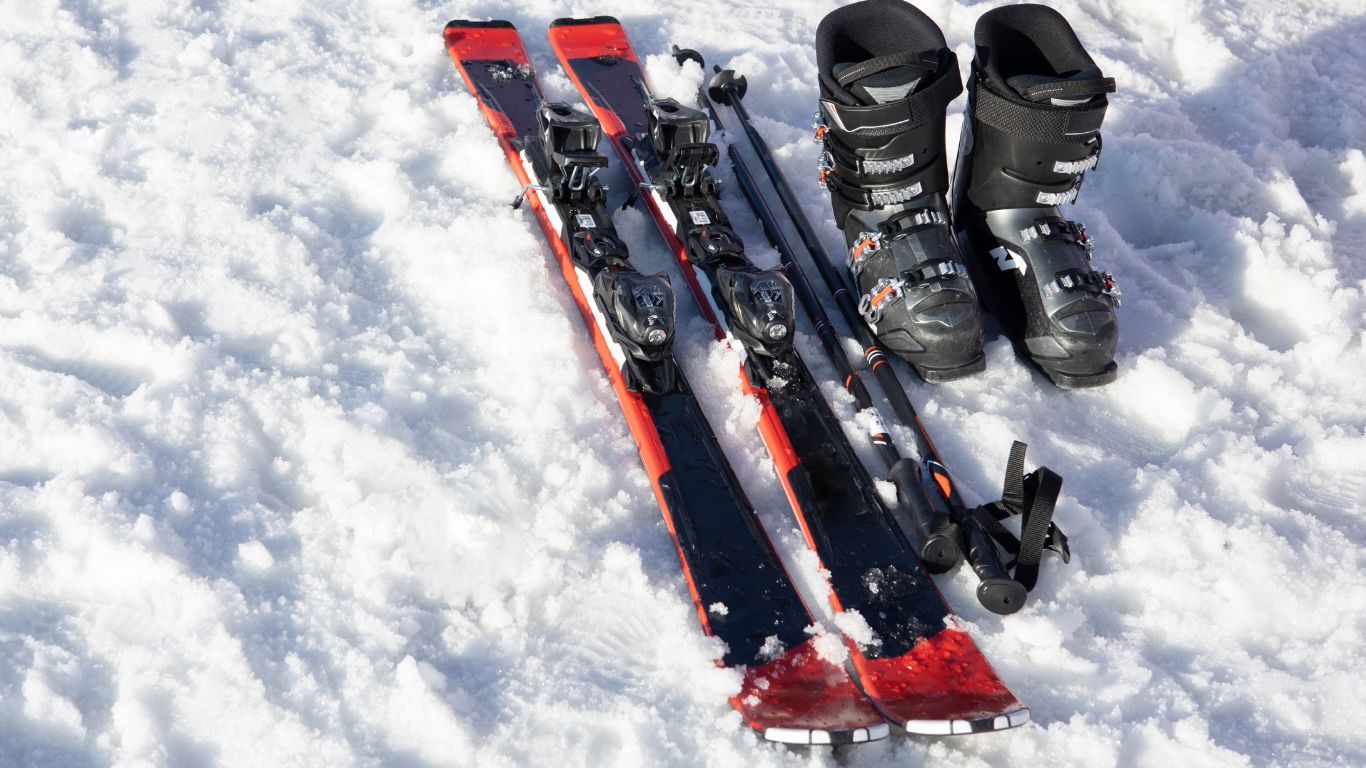Are you an adventure-seeker searching for a thrilling activity to add to your bucket list? Look no further than shield surfing – the perfect fusion of adrenaline-pumping excitement and artistic expression. Hailing from the lands of Hyrule and finding inspiration in the mythical world of Legend of Zelda: Breath of the Wild, shield surfing has emerged as a unique and trendy sport, allowing enthusiasts to glide gracefully down steep slopes while showcasing their style. In this comprehensive guide, we will delve into the art of shield surfing, exploring everything from essential gear and technique to tips for mastering the slopes. Whether you are a novice looking to dip your toes into this extraordinary sport or a seasoned rider eager to enhance your skills, get ready to embark on a thrilling journey down the mountains with style.
Picture yourself perched atop a snow-covered mountain, your heart pounding with excitement as you take one last glance at the breathtaking vista before launching into a daring descent. With your trusty shield, you push off, instantly experiencing an adrenaline rush. Shield surfing is not just about the thrill; it is an art form, a means of self-expression that allows individuals to glide flawlessly down slopes while showcasing their unique style and technique. The beauty of this sport lies in its versatility – whether you prefer an elegant and graceful approach or a more daring and adventurous one, the possibilities are endless. In this guide, we will take you through the fundamentals of shield surfing, from choosing the right gear to mastering the art of balance and technique. So grab your shield and get ready to unlock a new world of exhilaration and style as we dive into shield surfing.
What is shield surfing, and why is it so popular?
Shield surfing, the exhilarating sport combining snowboarding and skateboarding, has taken the outdoor adventure world by storm in recent years. Shield surfing has captured the hearts of thrill-seekers and nature enthusiasts worldwide with its blend of grace, skill, and pure adrenaline. In this section, we will delve into the essence of shield surfing, exploring what it entails and why it has gained such popularity.

Credit amazon.com
At its core, shield surfing involves descending mountainsides using a shield as a means of transportation. Though it may sound like something out of a medieval fantasy, shield surfing has evolved into a contemporary extreme sport. The shield, typically made from sturdy materials such as wood or metal, is strapped to the surfer’s feet, allowing them to glide effortlessly across the snow or sand.
What makes shield surfing so popular? Well, several factors contribute to its growing appeal. Firstly, shield surfing offers a unique sense of freedom and adventure. As surfers effortlessly slide down the mountainside, they experience a rush of adrenaline that is difficult to replicate. The feeling of carving through fresh powder or cruising over dunes is unmatched, providing an unparalleled thrill that keeps surfers returning for more.
Moreover, shield surfing allows individuals to immerse themselves in the breathtaking beauty of nature. Unlike traditional winter sports such as skiing or snowboarding, shield surfing enables participants to forge a stronger connection with their surroundings. As they navigate steep slopes or take on challenging terrains, shield surfers become aware of the rugged landscapes and natural wonders surrounding them. This connection to nature resonates deeply with many enthusiasts and adds to the allure of shield surfing.
In addition, shield surfing has a particular artistic aspect that contributes to its popularity. Gliding down a slope with elegance and finesse requires a keen sense of balance and coordination. Shield surfers can express their style through movements, effortlessly incorporating spins, flips, and tricks into their runs. The grace and skill required to master shield surfing create a sense of beauty and artistry, making it as much a form of self-expression as it is a sport.
Furthermore, shield surfing’s accessibility is critical to its burgeoning popularity. Unlike other extreme sports requiring expensive equipment or specialized training, shield surfing can be enjoyed by individuals of varying skill levels and budgets. With minimal gear needed and the ease of learning the basics, shield surfing opens doors to a wide range of adventurers, from novices taking their first tentative steps to experienced athletes honing their techniques. This inclusivity makes shield surfing an attractive option for those seeking a thrilling outdoor activity.
In conclusion, shield surfing has taken the outdoor adventure world by storm, captivating enthusiasts from all walks of life. Its unique blend of freedom, connection to nature, artistic expression, and accessibility have increased popularity. As individuals seek out new and exhilarating experiences, shield surfing provides a dynamic, awe-inspiring way to glide down mountains with style. So strap on your shield, embrace the rush, and embark on an unforgettable ride down the mountainside.
Choosing the correct shield for surfing: materials and design.
Regarding shield surfing, one of the most thrilling mountain sports, selecting the correct shield is paramount. Your shield will determine your gliding performance and safety as you make your way down those slopes with flair. This section will explore the different materials and designs you should consider when choosing your shield, enabling you to make a well-informed decision.
Material plays a significant role in the performance and durability of your shield. The two most common materials used for shield construction are wood and metal, each with unique characteristics. Wooden shields, typically made from sturdy and resilient hardwoods such as oak or hickory, offer excellent flexibility. This flexibility allows for better control and maneuverability, making them popular among experienced shield surfers. Additionally, wooden shields possess a natural shock-absorbing property, making your descents smoother and reducing the impact on your body. However, it’s essential to note that wooden shields may require more maintenance due to their vulnerability to water damage and warping.

Credit amazon.com
On the other hand, metal shields provide unmatched durability and stability. Made from steel or titanium,, they can withstand the harshest conditions, and offer excellent protection. Metal shields are ideal for rugged terrains or icy slopes, ensuring better traction and providing a solid base for gliding adventures. They are also resistant to water damage, making them a reliable choice in wet or snowy environments. It’s worth noting that metal shields tend to be heavier than their wooden counterparts, potentially affecting maneuverability for novices.
Shield design is another critical aspect to consider when making your selection. The shape and size of your shield can significantly impact your control and performance on the mountain. Round shields are a classic choice, known for their stability and ease of use. They allow for a balanced surfing experience, making them suitable for beginners and seasoned surfers. The rounded edges of these shields also facilitate quick turns and direction changes, giving you a greater sense of control during your descents.
For those seeking a more adventurous ride, oval or asymmetrical shields may be the way to go. Oval shields provide a larger surface area, delivering more lift and speed, ideal for daring descents down steep slopes. Asymmetrical shields, on the other hand, offer unmatched agility and maneuverability. The slanted design allows for sharp turns and advanced techniques, perfect for experienced surfers looking to push their limits.
Ultimately, your shield of choice should suit your skill level, style, and the type of terrain you plan on conquering. If you’re new to shield surfing, starting with a round shield crafted from a material that aligns with your preferences is best. Gradually, as you build your expertise and confidence, you can experiment with different materials and designs to find what suits you best.
Remember, the correct shield can make all the difference in the quality of your surfing experience. Consider the materials and designs carefully, considering your skill level and desired performance. With the perfect shield in hand, you’ll be gliding down mountains with style and confidence, mastering the art of shield surfing like a true adventurer.
Mastering the basics: techniques for getting started with shield surfing.
Shield surfing is a thrilling activity that combines the adrenaline rush of snowboarding with the artistry of gliding down a mountain. It allows adventurers to harness the power of their shields to slide down slopes with style and grace. If you are ready to embark on this exciting journey, here are some basic techniques to master as you dive into the enchanting world of shield surfing.
1. Proper Gear and Equipment:
Before you hit the slopes, it’s crucial to ensure you have the right gear and equipment to keep you safe and enhance your experience. Start by obtaining a durable shield specifically designed for surfers. These shields are typically made from lightweight and sturdy materials like wood, metal, or even enchanted alloys. Remember to wear appropriate snow gear, such as boots, gloves, and goggles, to protect yourself from the chilly winds and potential falls. Safety should always be a top priority!
2. Stance and Balance:
Achieving the perfect stance and maintaining balance are essential for a smooth and controlled ride. Begin by standing parallel to your shield, with your feet shoulder-width apart. Keep your knees slightly bent, ensuring you have a solid base. This posture will stabilize your descent and allow quick adjustments as you navigate the slopes. Remember to distribute your weight evenly across both feet to maintain equilibrium throughout the ride.
3. Push-Off and Glide:
As you embark on your shield surfing adventure, the push-off technique will be your key to gaining momentum and gliding down the mountain. Start by positioning yourself on a gentle slope, holding your shield firmly in front of you. Engage your legs and push off forcefully, allowing the shield to slide smoothly beneath you. As you begin to glide, keep your body relaxed and focused. Shift your weight slightly forward, keeping your eyes fixed on the terrain ahead to anticipate any obstacles or changes in the landscape.
4. Turning and Carving:
Once you have mastered the basics of gliding, it’s time to add some style to your ride. Turning and carving techniques will enable you to navigate corners and sharp bends smoothly. To initiate a turn:
- Shift your weight towards the direction you wish to go.
- Apply light pressure on the edge of your shield, digging it into the snow slightly. This will help you maintain control and execute the turn gracefully.
- Remember to use your knees and body to guide your shield in the desired direction, leaning into the turn for stability.
5. Speed Control and Braking:
Maintaining control of your speed is vital for both safety and enjoyment. To control your speed, apply light pressure on the back edge of your shield using your trailing foot. This technique helps create friction between the shield and the snow, gradually reducing your speed. If you need to brake more urgently, firmly press your shield into the snow, using both feet to slow down. Mastering the art of speed control and braking will give you the confidence to tackle steeper descents.
Mastering these fundamental techniques will lay a solid foundation for your shield surfing journey. While practice is the key to improvement, remember always to respect the terrain, follow safety guidelines, and have fun exploring the exhilarating world of shield surfing. So grab your shield, hit the slopes, and let the wind carry you as you glide down mountains with grace, style, and a sense of adventure!
Taking your shield surfing skills to the next level: advanced tricks and techniques.
Congratulations! By mastering the basics of shield surfing, you have unlocked a thrilling world of adventure and excitement. But why stop there when advanced tricks and techniques are waiting to be conquered? This section will explore ways to elevate your shield surfing skills and take your mountain gliding to new heights.
1. Carving: The Art of Precision
One technique that separates the amateurs from the experts is carving. Carving involves shifting your weight and subtly angling your shield to make precise turns while maintaining control. You can initiate smoothly and elegantly using your body’s natural movements. Start by leaning into the turn with your lower body and extending your arm slightly in your desired direction. This allows you to glide gracefully down the slope, adding style to your descent.
2. Jumping Ramps and Gaps
Once you have mastered carving, it’s time to take things to the next level by incorporating jumps into your shield surfing repertoire. Look out for natural ramps or built jumps along your route and use them to catch some air. Approach the jump with speed, crouch just before takeoff, and then explosively extend your legs as you leave the ground. Remember to land with your knees slightly bent to absorb the impact smoothly. With practice, you can master pulling off breathtaking jumps, adding extra thrill to your downhill adventures.
3. Tricks for the Adventurous Souls
Shield surfing is not just about getting down the mountain but also about expressing your style. Numerous tricks can be incorporated into your runs to impress your friends and create a lasting impression. Start with basic tricks like spins and flips. As you become more comfortable and confident, progress to more intricate moves such as grabs, where you hold onto your shield while mid-air. The possibilities are endless, limited only by your imagination and creativity.
4. Get Creative with Obstacles
To truly push your shield surfing skills, seek out new challenges on the mountain. Look for natural obstacles like trees, rocks, or even narrow gaps. Use them as opportunities to test your agility and precision. Plan your path carefully, avoiding potential hazards while weaving in and out of tight spaces. Navigating these obstacles successfully will require quick reflexes and impeccable timing, allowing you to truly feel the thrill of conquering nature’s playground.
5. Connect with the Community
As you progress in your shield surfing skills, connecting with fellow enthusiasts is vital. Joining local clubs or online communities dedicated to this exhilarating sport can provide invaluable tips, advice, and support. These communities often organize events where you can showcase your skills and learn from experienced riders. By surrounding yourself with like-minded individuals, you can keep up with the latest trends, exchange tricks, and gain inspiration to keep pushing yourself further.
In conclusion, taking your shield surfing skills to the next level requires dedication, practice, and a willingness to explore new techniques and tricks. From mastering the art of carving and pulling off daring jumps to navigating obstacles with finesse, there is always room for improvement and growth. So, gear up, hit the mountains, and embrace the thrill of shield surfing as you unlock new levels of excitement and mastery.
Safety tips and equipment to ensure a fun and injury-free shield surfing experience.
Regarding shield surfing, exhilaration, and thrill are paramount, but safety should always be a top priority. Mastering the art of gliding down mountains with style can be an incredible experience if you take the necessary precautions and equip yourself with the right gear. Here are some safety tips and equipment recommendations to guarantee a fun, injury-free shield surfing adventure.
1. Choose the Right Shield:
Selecting the appropriate shield is the first step to ensuring a safe and enjoyable experience. Opt for a sturdy, durable shield designed explicitly for shield surfing. Make sure it provides enough surface area for stability without feeling too cumbersome. Since shields come in various shapes and sizes, finding one that suits your body type and skill level is essential.
2. Wear Proper Protective Gear:
Shield surfing, like any adventurous sport, requires appropriate protective gear. Start by strapping on a well-fitted helmet that covers your head entirely. This essential safety equipment will shield your head from potential injuries in falls or collisions. Additionally, remember to put on knee and elbow pads to safeguard your joints should you take a tumble.
3. Wear Suitable Clothing:
Shield surfing can expose you to changing weather conditions and rough terrains. Ensure you are dressed appropriately to avoid any discomfort or injuries. Wear layered clothing that provides both warmth and flexibility. It’s essential to have a breathable base layer to wick away moisture, followed by an insulating middle layer and a waterproof and windproof outer layer. For footwear, choose sturdy and ankle-supporting boots that provide good traction.
4. Assess Conditions and Terrain:
Before embarking on your shield surfing escapade, carefully evaluate the conditions and terrain. Research the area, including the incline, potential obstacles, and weather forecast. Ensure the slope is suitable for shielding and free from loose rocks, fallen branches, or other hazards. Remember, awareness of your surroundings is critical to preventing accidents and injury.
5. Inspect Your Shield Regularly:
Shield maintenance is crucial for ensuring safety during shield surfing. Before each ride, inspect your shield for any signs of damage or wear. Check for any cracks, dents, or loose fittings that could compromise your stability. It’s essential to address any issues promptly or replace the shield if it shows wear and tear.
6. Warm Up and Stretch:
Shield surfing is physically demanding and may strain your muscles if you must be adequately prepared. Warm up your body with light exercises to loosen up your joints and increase blood circulation. Additionally, stretch exercises that focus on your legs, arms, and core muscles. This will help reduce the risk of muscle strains and improve your overall performance.
7. Start Slow and Gradually Increase Difficulty:
If you’re new to shield surfing, it’s vital to start slowly and gradually progress as your skills improve. Begin on gentle slopes with minimal obstacles, allowing yourself to become comfortable with the technique and balance required. After gaining confidence, you can gradually take on steeper slopes or more challenging terrains. Always remember, there’s no rush to immediately conquer the most demanding trails.
Following these safety tips and equipping yourself with the right gear will ensure a fun and injury-free shield surfing experience. Remember, practice makes perfect, so take the time to master the art of shield surfing safely and with style. So gear up, glide down those mountains, and create an unforgettable.
Conclusion
Shield surfing is an exhilarating activity that allows you to glide down mountains with style and finesse. By mastering this art, you not only get to enjoy the thrill of the descent but also appreciate the stunning landscapes surrounding you. You can ensure safety and an enjoyable ride by starting with the right equipment and techniques. Remember to wear appropriate gear, practice on suitable slopes, and gradually increase your speed and skills as you gain confidence. With time and practice, you’ll effortlessly carve through the snow-covered slopes, feeling the wind in your face as you experience the true joy of shield surfing. So grab your shield, hit the mountains, and embark on an unforgettable adventure, mastering the art of shield surfing!








